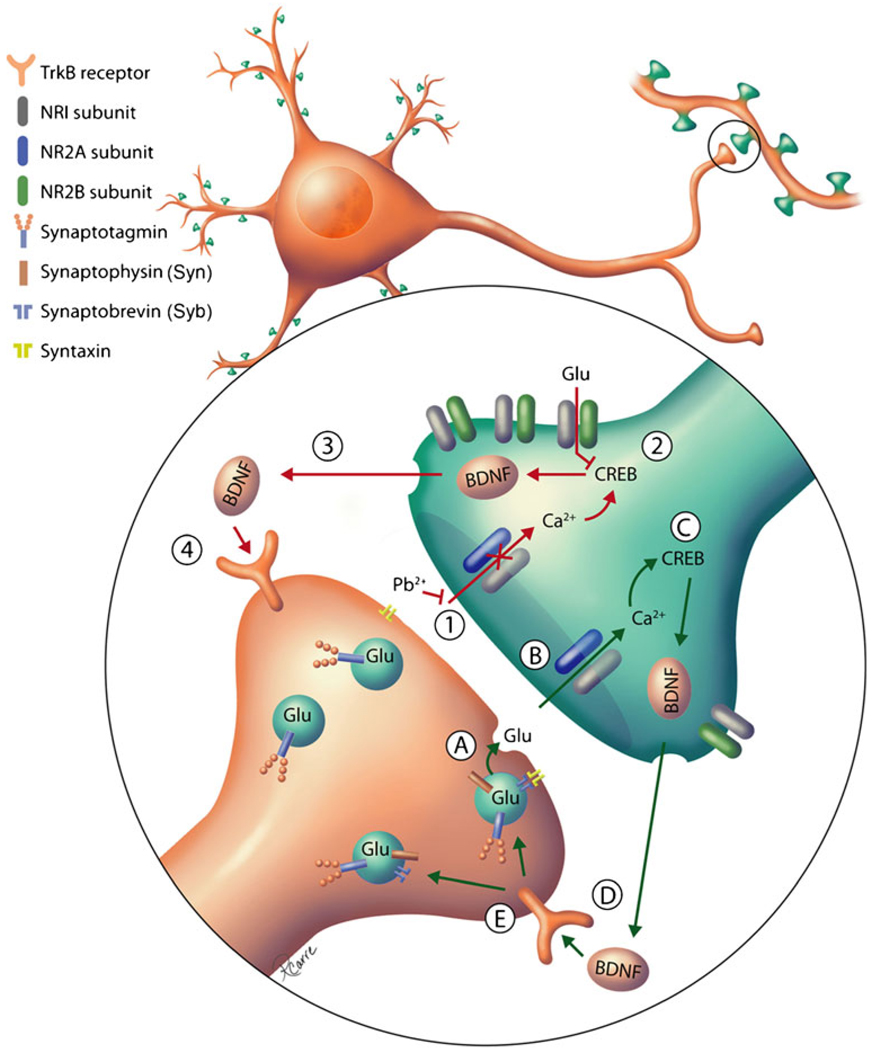Scheme 1.
Working model of molecular mechanism(s) by which chronic Pb2+ exposure disrupts synapse formation and plasticity in developing hippocampal neurons. Green arrows indicate normal processes; red arrows indicate Pb2+-impaired processes. In normal glutamatergic synapses, glutamatergic vesicles undergo Ca2+-dependent fusion with the plasma membrane in response to presynaptic signals (a). This process is mediated by the interaction with the v-SNARE Synaptobrevin and the t-SNAREs Syntaxin or SNAP-25. As a result of vesicular fusion, glutamate (Glu) is released from presynaptic terminals, resulting in NMDAR activation (b). Ca2+ enters the postsynaptic cell through synaptic NMDARs, activating downstream intracellular pathways. Under normal conditions, the predominant NMDARs at mature synapses are NR2A-NMDARs, which are linked to CREB phosphorylation (c). Activity-dependent CREB activation results in transcription of BDNF, which is transported and released in an activity-dependent retrograde fashion. Secreted BDNF interacts with the tropomyosin-related kinase receptor B (TrkB) (d). In the presynaptic neuron, BDNF activation of TrkB increases the number of docked vesicles and enhances vesicular release, as well as increases the incorporation of Syn and Syb into synaptic vesicles (e). During chronic Pb2+ exposure, however, Ca2+ influx through synaptic NMDAR is inhibited [1]. This causes a reduction in NR2A-NMDARs while NR2B-NMDARs are increased, possibly at extrasynaptic sites. As a result of reduced NR2A-NMDAR activation, NR2B-NMDARs are operational and are coupled to a CREB shut-off pathway. Reduced CREB signaling during Pb2+ exposure may result in decreased BDNF protein levels [2]. BDNF secretion is impaired during Pb2+ exposure [3], resulting in reduced activation of presynaptic TrkB receptors by BDNF [4]. Without positive feedback, there is reduced incorporation of synaptic vesicle proteins Syn and Syb and impaired vesicular release that can be rescued by exogenous addition of BDNF

